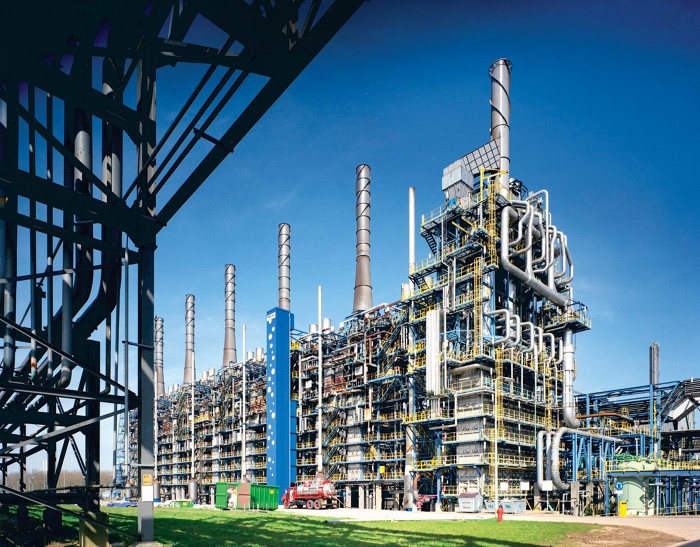Advertisement
Grab your lab coat. Let's get started
Welcome!
Welcome!
Create an account below to get 6 C&EN articles per month, receive newsletters and more - all free.
It seems this is your first time logging in online. Please enter the following information to continue.
As an ACS member you automatically get access to this site. All we need is few more details to create your reading experience.
Not you? Sign in with a different account.
Not you? Sign in with a different account.
ERROR 1
ERROR 1
ERROR 2
ERROR 2
ERROR 2
ERROR 2
ERROR 2
Password and Confirm password must match.
If you have an ACS member number, please enter it here so we can link this account to your membership. (optional)
ERROR 2
ACS values your privacy. By submitting your information, you are gaining access to C&EN and subscribing to our weekly newsletter. We use the information you provide to make your reading experience better, and we will never sell your data to third party members.
World Chemical Outlook 2024
Petrochemicals
Middle Eastern oil companies will continue their push into chemicals
The firms look to diversify in the face of a declining outlook for fuels
by Alexander H. Tullo
January 19, 2024
| A version of this story appeared in
Volume 102, Issue 2

Two Middle Eastern national oil companies—Abu Dhabi National Oil Company (ADNOC) and Saudi Aramco—are likely to sign more big-ticket chemical deals in 2024. With motor and aviation fuel markets poised to decline, the companies see the chemical industry as a growth sector worth pursuing.
Takeaways
➡ Two large Middle Eastern oil producers, ADNOC and Saudi Aramco, pursued large acquisitions in 2023 and are likely to sign more major deals in 2024.
➡ Petroleum firms see chemicals as a growth market as global demand for fuel ebbs.
ADNOC has signaled its intention to purchase two of the world’s largest chemical companies. It is in discussions to buy the German polyurethane and specialty chemical maker Covestro, and it recently bid to acquire a controlling stake in the Brazilian petrochemical maker Braskem.
ADNOC is also shoring up its portfolio closer to home. In December, it signed a $3.6 billion agreement to buy out OCI in their Fertiglobe nitrogen fertilizer joint venture, which operates in Algeria, Egypt, and the United Arab Emirates (UAE). In addition, the company is negotiating a merger between Borealis, a European petrochemical maker in which ADNOC has a 25% stake, and Borouge, a UAE-based petrochemical joint venture between Borealis and ADNOC.
Meanwhile, in deals that include large purchase agreements for Aramco’s petroleum, the Saudi firm is taking equity positions in up-and-coming Chinese companies that both refine oil and make chemicals. Last July, Aramco bought a 10% stake in Rongsheng Petrochemical, one of China’s largest petrochemical producers, for $3.4 billion. As part of that deal, Aramco will supply oil to Zhejiang Petroleum and Chemical (ZPC), a Rongsheng subsidiary that operates a massive refining and petrochemical complex.
Aramco is also negotiating the purchase of a 10% stake in Shandong Yulong Petrochemical, which is building a big refinery and petrochemical complex in China. Aramco is in talks to buy a similar interest in Jiangsu Shenghong Petrochemical Industry Group, another refining and chemical company. Both those deals could involve crude oil supply agreements.
The refineries these Chinese chemical firms operate are so-called crude-to-chemical facilities that produce a greater proportion of chemicals—mainly aromatics like benzene, toluene, and p-xylene—than conventional refineries do. For example, chemicals compose about 40% of ZPC’s output. If Aramco became the sole oil supplier to the three facilities, the Saudi firm would be sending them nearly 10% of its output.
Alan Gelder, vice president of refining, chemicals, and oil markets for the consulting firm Wood Mackenzie, says Aramco and ADNOC’s dealmaking has everything to do with the long-term prospects for the oil that Saudi Arabia and the UAE produce. The transition away from fossil fuels, caused in part by the adoption of electric vehicles and the emergence of sustainable aviation fuel, is cutting into petroleum demand. Oil companies need to drum up new business.
Gelder says Aramco is seeking vertical integration from the oil well, while ADNOC’s strategy is largely geographic diversification and expansion into specialty materials.
“What you’ve got now is a growing realization that oil for combustion as a transport fuel will decline at some point,” Gelder says. On the other hand, he adds, population growth, urbanization, and an expanding middle class around the world all point to rising demand for petrochemicals.
“If you’re a major oil producer who wants to be confident that there will be a continued demand for the hydrocarbons you produce, you want to make sure you can serve the growing demand for petrochemicals,” Gelder says.






Join the conversation
Contact the reporter
Submit a Letter to the Editor for publication
Engage with us on Twitter